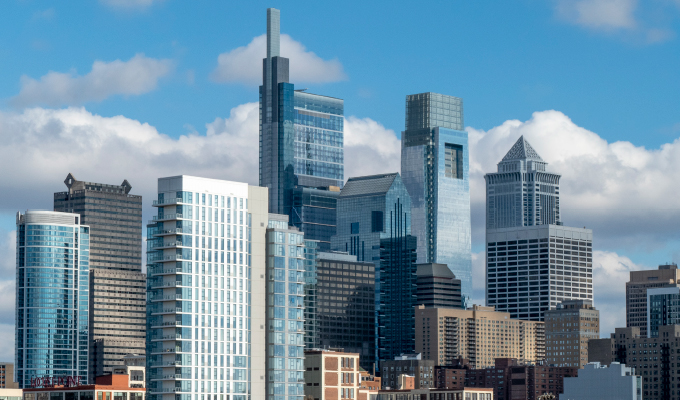By William S. Thomas
These words by artist, architect, and designer Eero Saarinen—always design a thing by considering it in its next larger context—challenge modern design and construction professionals to consider how changes in the worldwide climate have changed the standard of care for the built environment. Some critics attribute growth in construction with aiding in the global effects of climate change. They contend buildings consume 40 percent of the energy in the United States alone annually, and emit nearly half of the CO2, through greenfield development, cement production, and burning fossil fuels such as oil, gas, and coal. How the design of buildings impacts the environment itself is worthy of examination; however, we must critically focus not just on how those designs will perform, but how they will withstand the environmental conditions they face throughout their useful life.
DEFINING STANDARD OF CARE
In most jurisdictions, the conduct of professionals is judged (in the civil litigation context) by the legal term of art, “the standard of care.” That standard is almost universally defined as, “that degree of care ordinarily provided by similarly situated professionals practicing under the same or similar circumstances.” The circumstances we are in, a world where the global impacts of climate change are felt in large and obvious, but often small and incremental ways, is where we must adapt. If professionals do not meet the standard of care, they can be adjudged by the court or jury to have been “negligent.” While the standard of care does not require perfection, it does require a keen understanding of the conditions, weather patterns, and potential exposure to extremes a finished structure will encounter.
Changes in circumstances demand changes in approach. Unfortunately, local building codes, and some industry standards and guidelines are slow to adapt. In a court of law, it may not be enough to say that a design “complied with applicable codes or ordinances.” While it may be evidence of “due care,” compliance with industry standards, or standards legislatively or administratively imposed, (such as locally adopted building codes or ordinances), does not preclude a finding of negligence where a reasonable person would have taken additional precautions under the circumstances. So, it is no absolute defense to a claim of negligence to say a given design complied with code.
When a design is questioned through a lawsuit, the opposing expert will often say that codes and standards “are but a bare minimum expectation,” and that “something more was required under the circumstances.” Thus, evidence of negligence is always left to a critique from a peer who will always have done it differently than you. Designers need to be forward thinkers, and consider the impacts of changes yet to come, in order to provide structures and systems that can stand up to tomorrow’s climatic conditions. But all this begs an interesting question: What are designers to do if their recommendations to account for changing environmental conditions are ignored?
PENNY WISE, POUND FOOLISH
In a competitive commercial marketplace, it may be difficult to justify “over-designing” a building in a way that exceeds the requirements of the applicable codes. Some in the industry are challenging this mindset, arguing it is actually more cost effective to design to a more stringent standard. Through its extensive study and recommendations, the Multihazard Mitigation Council of the National Institute of Building Sciences’ Natural Hazard Mitigation Saves: 2018 Interim Report found that by adopting a number of suggested mitigation strategies, society saves a benefit-cost ratio of 4:1 for building improvements that exceed select provisions of the applicable building codes and standards. In addition to saving money, it is predicted adopting these more stringent standards would also save hundreds of lives.
HOW SHOULD DESIGNERS RESPOND?
With changing circumstances comes the need for a change in philosophy. Designers need to be adaptive and begin to factor the “deep uncertainty” that comes with the extreme unknowns of future conditions into their concepts for the modern built environment. Real options need to be factored into the design which will allow the building to be adaptable and retrofitted to meet a changed condition years from now, if those conditions require it, hopefully avoiding having to tear the structure down and start again. Also, small details of the building should be examined with an eye towards current changed conditions in areas where the local codes may not have kept pace. Water, wind, and sun all wreak havoc on building components and construction practices, not to mention the anticipated schedules to complete a project, so designers need to creatively consider how these enhanced challenges will play out on all their recommended systems and components.
But, if not, the designer should make sure to properly document the entire exchange, because all too often, when issues later arise, the client will say the designer “failed to insist” on an element the owner rejected for cost reasons.
CLOSING THOUGHT
Meeting the standard of care means adapting to modern circumstances. As is said, the more things change, the more they remain the same. Communication is still the single most important part of the design process. Designers should use a robust approach to design development, carefully consider the project they are designing, and ensure their client is fully appraised of all available options for a successful building, now and long into its uncertain future.
About the author:
William Thomas is a principal at Gausnell, O’Keefe & Thomas, LLC (www.gotlawstl.com) in St. Louis, where he focuses his practice on construction claims and loss prevention. He is a member of the AIA, ASCE, and International Association of Defense Counsel, for which he serves on the Construction Law Committee. He can be reached at wthomas@gotlawstl.com.
Modern Contractor Solutions, April 2020
Did you enjoy this article?
Subscribe to the FREE Digital Edition of Modern Contractor Solutions magazine.



